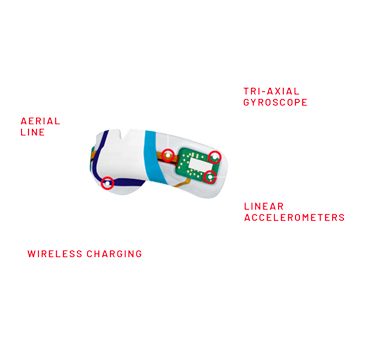
Instrumented mouthguards (iMGs) contain an inertial measurement unit embedded within a gumshield, which typically consist of a linear accelerometer and gyroscope. IMGs are worn by sportspeople, particularly in collision-based sports such as rugby, and allow the live measurement of the linear and angular accelerations imparted to the head during sporting movements occurring in training sessions and competition. The ability to measure these so called ‘head acceleration events’ is important, as they are considered to be a risk factor for brain injuries, such as concussion, and have implications for long-term player welfare. They also provide information about the collision-specific workload of a player, something that locomotive-based measurement systems, such as GPS devices, are less suited towards. There are various ways to quantify and report these head acceleration events, and various data processing steps are required to translate raw signals measured on the mouthguard into actionable data for end-users.
The accurate processing and reporting of these data are therefore important, as different processing steps may result in different reported values; consistency is thus needed amongst iMG manufacturers and researchers to ensure that data are valid, reliable, and comparable across individuals and contexts. This project therefore aims to explore methods of processing the iMG data for applications in various sports, such as rugby and boxing, to minimise the 'noise' and maximise the reporting of ‘true’ signals that represent what has happened. This is essential in order to obtain high quality data which will provide greater confidence for subsequent interpretation and can inform training practices and load monitoring in sport.
